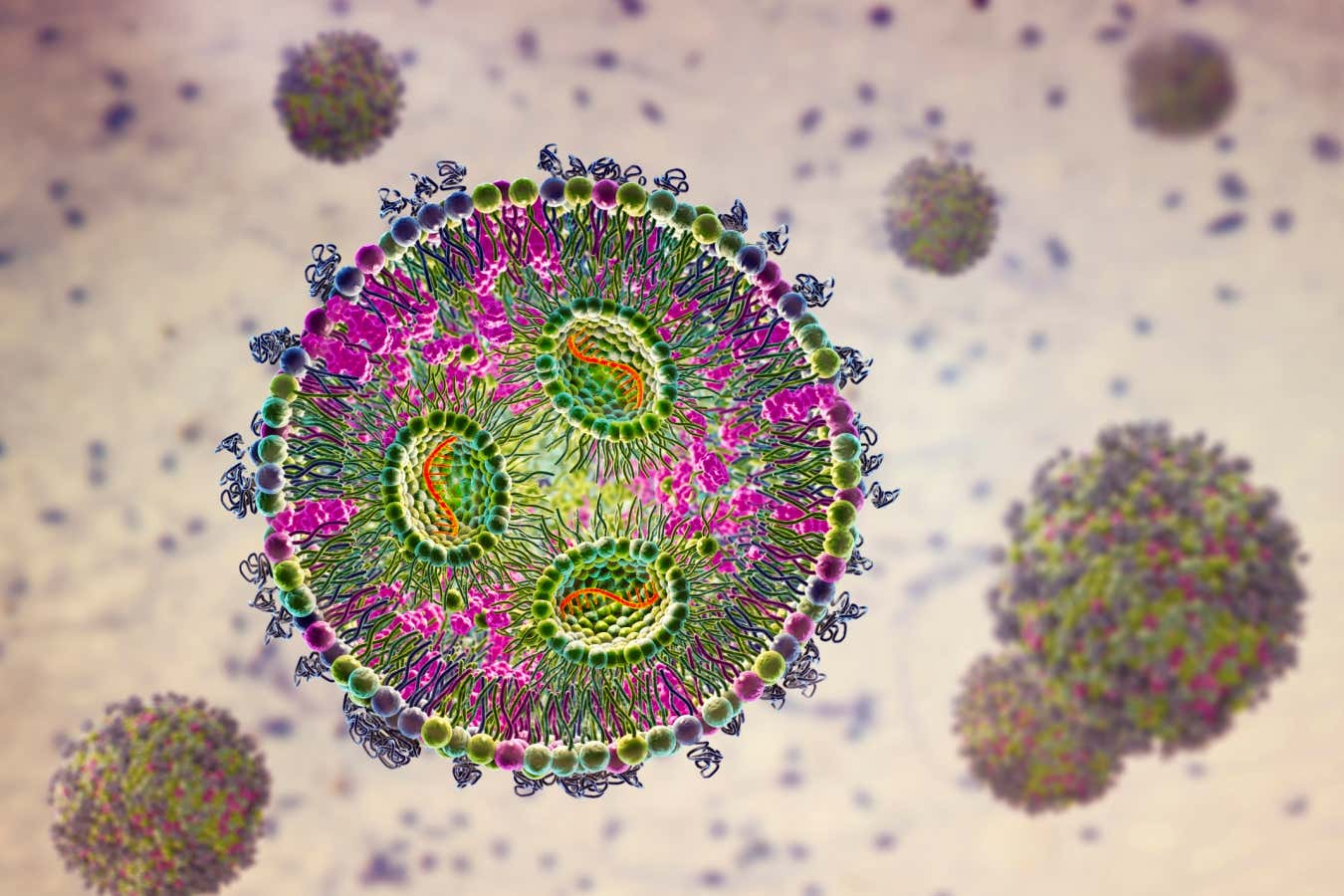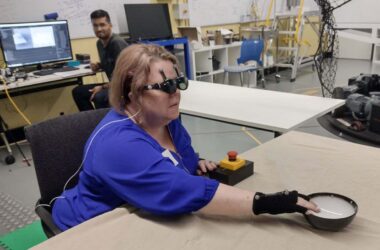Illustration of a lipid nanoparticle created to deliver mRNA into the body
Dr_Microbe/iStockphoto/Getty Images
The technology used in mRNA COVID-19 vaccines can be adapted to deliver genetic material to the blood stem cells in bone marrow, as shown in animal studies. This breakthrough has the potential to revolutionize the treatment of a wide range of conditions, including inherited disorders, infectious diseases like HIV, and even aging.
By introducing messenger RNA (mRNA) into blood stem cells, scientists can instruct these cells to produce desired proteins, including those used in CRISPR genome editing. This opens up a vast array of possibilities for targeted mRNA delivery.
Currently, some inherited blood cell diseases can be cured by removing an individual’s blood stem cells, correcting the underlying mutations, and reintroducing the cells back into the bone marrow. However, this personalized treatment approach is time-consuming and costly. Moreover, it requires the use of toxic drugs to eliminate existing blood stem cells, which can have severe side effects and often lead to infertility.
The ability to modify blood stem cells within the body addresses these issues, and researchers worldwide are actively working on this exciting technology.
A team of scientists led by Stefano Rivella at the Children’s Hospital of Philadelphia and Hamideh Parhiz at the University of Pennsylvania has developed a method using lipid nanoparticles to deliver mRNA to blood stem cells. Initially, these nanoparticles were used to deliver mRNA to muscle cells, but when injected into the bloodstream, they primarily targeted liver cells. To focus on blood stem cells, the team attached antibodies that bind to a specific protein found on their surface.
The researchers conducted several experiments on mice, demonstrating that these antibody-targeted lipid nanoparticles effectively deliver mRNA to blood stem cells. For example, when nanoparticles containing mRNA for a glowing protein called luciferase were injected into the mice, the bone marrow cells in their femurs emitted light. Up to 60% of the stem cells were modified. Although liver cells also took up the nanoparticles, it was not an issue for certain purposes, such as treating sickle cell disease.
To further refine the delivery method, the team added a “switch” to the mRNA sequence that turns off in liver cells, preventing luciferase production in the liver while allowing it in the bone marrow.
Additionally, the researchers used this approach to deliver an mRNA that triggers cell suicide only in blood stem cells, effectively eliminating the need for toxic drugs to make space for bone marrow transplants. This development holds great promise not only for improving the treatment of genetic diseases but also for global accessibility.
Suk See De Ravin, a researcher at the National Institutes of Allergy and Infectious Diseases in Maryland, who works on gene therapies, describes this as a combination of remarkable technological advancements that will enhance curative approaches for genetic diseases in developed countries and potentially benefit people around the world.
Furthermore, targeted mRNA delivery could have implications beyond medical applications. For example, it could be used for “gene doping” in sports, enabling athletes to enhance their performance by increasing the production of red blood cells to carry more oxygen throughout their bodies, without being easily detectable.








